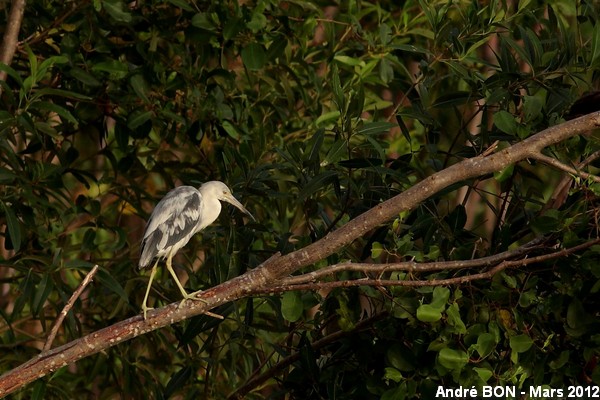
| Little Blue Heron (Egretta caerulea (Linnaeus, 1758)) |

|
|
Scientific name: Egretta caerulea (Linnaeus, 1758) Common name: Little Blue Heron French name: Aigrette bleue Order: Pelecaniformes Family: Ardeidae Size: Body size: 76 cm; Weight: 396 g; wingspan: 95 to 105 cm. Habitat: Damp inland regions with shallow water. Mud beds and mangrove in coastal regions. Food: Aquatic animals, crabs, amphibians and insects, caught in shallow water. Nesting: Little Blue Herons nest in variable size colonies with other Heron species. The nest is a simple platform located between 3 and 12 metres high. There are about 3 to 5 eggs per clutch. Migration: The northern birds move southwards in winter. Geographic area: South of the United States, central America, the Caribbean, coastal regions of South America south to Uruguay on the Atlantic side and south to Bolivia on the Pacific side. |
Adults are a greyish blue colour. The bill is bluish or greyish with a black tip. During the breeding season, the head et the neck are reddish brown. The legs are dark blue. There are long plume-like feathers on the neck and on the back. Outside the breeding season, the head and the neck are dark brown. The legs are paler. During the first year, young birds are white with greyish tips on the primary remiges. The legs are darker than the adults' ones. The tip of the bill is greyish black. Immature birds getting their adult plumage are variegated, blue and white. They get their uniform greyish blue colour when they are two years old. |
| [To know more about the Little Blue Heron] [Top] |

|
I have shot this picture at the old harbour of Cayenne. This immature Little Blue Heron shows a mix of white and blue feathers. |